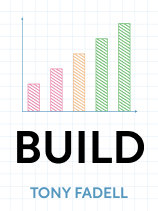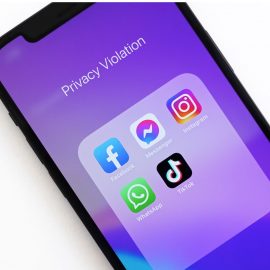

This article is an excerpt from the Shortform book guide to "Build" by Tony Fadell. Shortform has the world's best summaries and analyses of books you should be reading.
Like this article? Sign up for a free trial here.
At what point does market disruption go too far? How should you time the second generation of your product? When should your focus shift to profit?
At Apple, Tony Fadell built several generations of the iPod and the iPhone. Now he shares his advice about product evolution in his book Build: An Unorthodox Guide to Making Things Worth Making.
Keep reading to learn how to release and subsequently evolve a product.
Product Evolution
Fadell asserts that what you focus on in each release will depend on which product generation you’re working on. He details his recommendations regarding product evolution through the first three generations.
The First Generation
Fadell asserts that your first-generation product must be “disruptive”—it must represent some sort of fundamental shift in how people normally do things. You may need to disrupt multiple elements of the customer experience; Nest disrupted both the thermostat (by making it smart) and how it was sold (by selling it directly to consumers). But don’t disrupt so many elements that your product isn’t immediately understandable. For example, the Segway, which was meant to disrupt transportation, failed in part because people didn’t understand how to use it.
(Shortform note: Fadell’s definition of disruptive product aligns with that of Crossing the Chasm author Geoffrey Moore, who contends that such a product requires the customer to change how she uses a product in order to adopt it. In contrast, The Innovator’s Dilemma author Christensen suggests that a disruptive product disrupts the market; it initially appeals only to a certain niche but gains mainstream appeal as it evolves and grows more refined. However, Christensen does agree with Fadell that disruptive products often require retooling of other processes (like sales channels), which is why established companies often ignore them: Retooling their operations is too expensive.)
To create a disruptive product, Fadell recommends that you work within clear limitations. Keep your team and budget small; the larger these become, the more likely you’ll waste time and money building unnecessary features. Additionally, set a clear timeline: It should take between nine and 18 months to ship your first product. To stick to that, create several internal deadlines. Each team should have recurring deadlines to ensure that they’re producing what they need to; there should also be regular project updates to ensure that everyone is on the same page. Finally, set a deadline for completing the product. If, when you reach that point, your product does almost everything you wrote in your press release, it’s ready to launch.
(Shortform note: It will likely take much longer than you expect to ship your first product, as humans are subject to the planning fallacy: We consistently overestimate how long it will take us to finish a project despite having clear evidence to the contrary. Creating several internal deadlines can help mitigate this fallacy, as we tend to be better at estimating how long it will take to finish short-term projects than long-term projects. Alternatively, set your deadline later than you think you need; Eat That Frog! author Brian Tracy recommends pushing it back by 20%. Setting a realistic deadline may help you combat the perfectionism that prevents you from releasing a product that’s mostly ready, agrees Big Magic author Elizabeth Gilbert.)
If your launch fails, figure out why. Examine the data to determine whether your intuition was flawed or if something external harmed your launch. Once you know why it failed, apply these lessons to your next launch—whether it’s a new version of this product or a new project entirely.
(Shortform note: Keeping your team and budget small may also make potential failures easier to tolerate. In Creativity, Inc., Ed Catmull suggests that failure is often hard to accept because we don’t want all the resources we put into the project to go to waste; innovating in low-stakes environments that use fewer resources can circumvent this issue.)
The Second Generation
When creating your second-generation product, don’t focus on disruption. Instead, improve upon the first generation without drastically changing the features that your customers have grown accustomed to. Now that you have real data from actual customers, making these improvements will rely more on this data than your opinion.
(Shortform note: Other experts add something else you shouldn’t change when updating your first-generation product: the name. Research suggests that if you change the name, your customers will expect drastically different features and may be turned off from using the product. To find out what you should change, pay attention to any patterns you see in the data; understanding these patterns will help you make more informed decisions.)
Additionally, consider the timing. Fadell recommends that you release updates to your products on a predictable schedule; that way, your customers will know when to expect new products, and your team will have clear deadlines to work toward. He recommends releasing one to three smaller updates and one large launch each year.
(Shortform note: Some experts suggest that you should change how often you release product updates depending on what stage your company is in. If your company is still growing, release product updates as soon as they’re ready to help build excitement. If your company is more established, create a release schedule, which allows developers to prioritize the most important fixes and builds customer anticipation ahead of the expected release dates. But be careful if you want to do more than three smaller updates and a large launch each year; if you update your product too often, your customers will start to ignore the news.)
The Third Generation
By the third-generation product launch, focus on making money. Fadell states that your first-generation product likely won’t make you money, as most customers are generally wary of new technology. Your second-generation product should allow you to recoup your investments; by this point, you should have fixed the issues in the first generation and made a better product that works well for your customers. The third-generation product is when you focus on profitability so that you can keep the business going.
(Shortform note: While Fadell suggests that you can wait until the third generation to grow profitable, in Crossing the Chasm (which Fadell cites in his discussion of product generations), Moore warns that if your company runs on venture capital (and not its own profits), you risk developing a “welfare state mentality” and losing your sense of focus and urgency. Instead, Moore advises that you become self-sustaining on profits as soon as possible.)

———End of Preview———
Like what you just read? Read the rest of the world's best book summary and analysis of Tony Fadell's "Build" at Shortform.
Here's what you'll find in our full Build summary:
- Entrepreneur Tony Fadell's memoir, from the iPhone to Nest
- Advice for succeeding in every stage of your career, from beginners to CEOs
- Tips for building a product-based business and a great team






